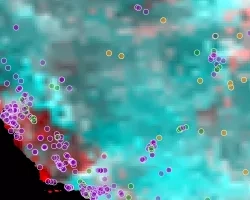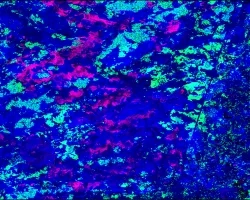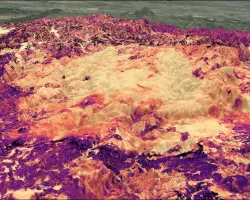Economies in Southeast Asia are dependent on natural resources and agriculture, which are impacted by weather extremes and climate variability. Rice is Asia’s most important food crop with nearly 3 billion people reliant on rice as their major food source. Over the next ten years this number is expected to climb to nearly 4 billion people. Throughout Southeast Asia, the most important constraint to rice production is water stress, which affects nearly 10 million ha of upland rice and over 13 million ha of rainfed lowland rice. Future climate change effects on rainfall timing and amount, and projected increases in temperature are expected to exacerbate existing water stresses and will have a direct impact on agriculture, especially rice cultivation. Rural populations who depend on traditional rainfed systems are disproportionally affected by water stress and are highly vulnerable to future changes in climate.We propose to provide the SERVIR-Mekong hub with the modeling and data system tools needed to produce linked hydrologic and crop yield as now casts, forecasts and at climate scales using the best available data including NASA Earth observations. The proposed project will develop tools and provide training for SERVIR Mekong in support of the agriculture food security thematic service area. The effort aims to improve, enrich, and expand the use of Earth observations to help make informed decisions to adapt to and reduce vulnerabilities from impacts of extreme events and future climate change in the Lower Mekong. To achieve our aim, we build on experience andexpertise gained during implementation of the SERVIR Eastern and Southern Africa Drought and Crop Productivity Assessment and Prediction (ESA-DCPAP) project that developed an innovative framework called the Regional Hydrologic Extremes Assessment System (RHEAS) to provide linked hydrologic and yield assessments for current conditions, seasonal outlooks and at climate scales. RHEAS has a hydrologic model at its core loosely coupled with a crop yield model. The system automatically ingests, subsets and store s data 8 required to run the models from several sources including distributed NASA archives. The team will apply best practices and lessons learned from the ESA - DCPAP project to build capacity and provide training in the use of remote sensing and model outputs. The objectives of the proposed effort are to: 1.develop and deliver an integrated data and modeling system based on the RHEAS that provides linked hydrologic extremes and crop yield now casts, forecasts, and projections;2.build capacity to apply the system outputs for decision making; and 3.develop a framework for evaluation of outcomes and impacts.Anticipated outcomes:1.Increased resilience to hydrologic extremes and climate variability through interactions with government, academia, and farmers.2.Enhanced decision - making by government and farmers for improved food security among vulnerable communities.A capacity building framework adapted from the public health sector and used in the ESA - DPCAP project will be employed to build capacity and train local technical personnel to use the RHEAS outputs. A framework for evaluation of the project, outcomes and a strategy for assessment will be developed. To ensure adaptation options are aligned with USAID goals and object ives and mindful of indigenous coping mechanisms, development of the modeling framework, data products and approach to capacity building will be guided by the United States Agency for International Development (USAID) Mekong Adaptation and Resilience to Climate Change (ARCC) study. The tools and trainings developed as a result of this project are scalable across SERVIR regions. The system software, documentation, and all data products will be delivered to the SERVIR Coordination Office and SERVIR - Mekong by the end of the projects.
Project


